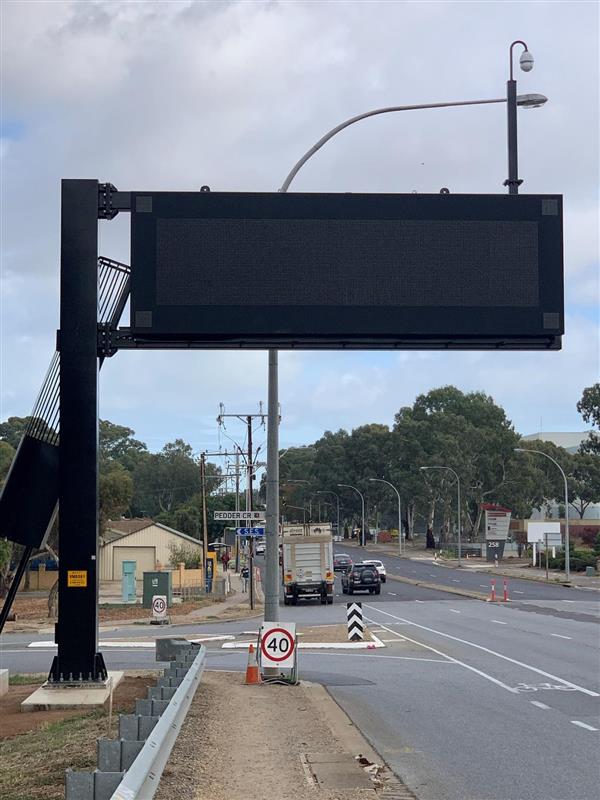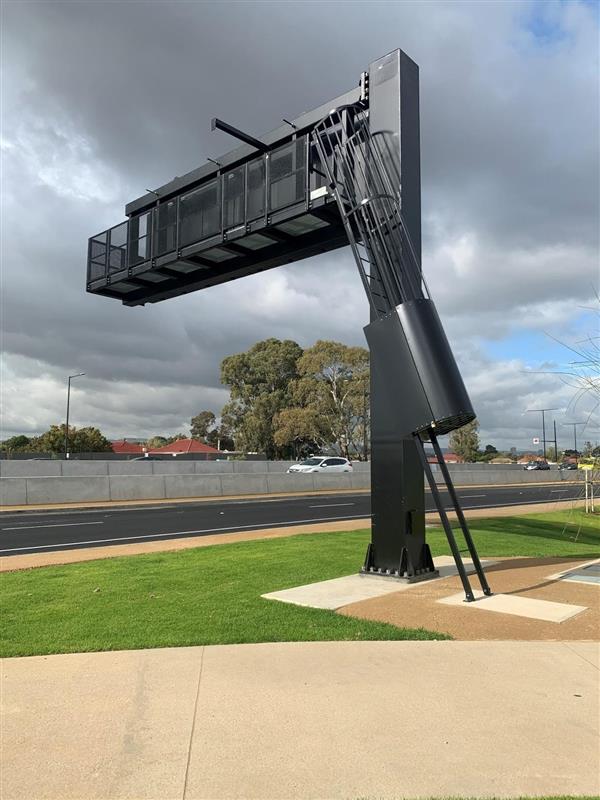Four more signs go live in Australia
Earlier this year, BRAUMS successfully delivered another four Type-B Variable Message Signs (VMS) for the public motorway network for the Regency to Pym Street Project in South Australia. These signs were all commissioned in late April this year, and represent the latest standard in VMS technology.

One of the BRAUMS Type-B VMS’ installed on the Regency to Pym St Project
VMS Technology has Confidence of Client
Brendan McIntosh, BRAUMS’ South Australian state manager, said, “Out of the four signs delivered, three of the signs were installed on-site straight away, and the other sign taken to the client’s workshop for Factory Acceptance Testing. After minor configuration to meet the client’s needs, the sign was accepted by the client, and the minor configuration works were performed on-site to the other three signs.”
Site Acceptance Testing was performed by the client over a few nights with Brendan on-site for local support and Pat McDermott available remotely from Sydney for any technical support if required.
Project Specific Configuration
Even though the signs were made up of LEDs capable of emitting some 16 million colours via RGB optical technology, the configuration loaded into the signs locked the sign down to only being able to display the client’s requested messaging colours of Red, Yellow, Green and White.

Another BRAUMS Type-B VMS installed on the major infrastructure project
Future-Proofing the Network
The roadside cabinets installed had provision for both a serial connection for each VMS to communicate directly to STREAMS via the on-site Field Processor, as well as an Ethernet connection for native TCP/IP communication, meaning that should the roadway operator wish to upgrade to NTCIP for all of their roadside assets, the sign already has this functionality readily available with a literal flick of the switch.
The extreme power efficiency of the BRAUMS VMS was again demonstrated when the current draw when displaying a message was measured to be 1.6 amps, compared with another manufacturer’s smaller Type-A VMS measuring at almost double that current consumption of 2.9 amps.
Overall, the project was delivered smoothly and BRAUMS look forward to supplying more of the world-leading VMS technology into Australia and New Zealand!
There is no variable message sign requirement that BRAUMS can't fulfill, so please contact our team directly.